
WE FAN OUT across the landscape between spiky clumps of spinifex. Heads down and moving as one, we carefully scan the ground in front of us for traces, for clues. We’re all looking for the burrows of a very special animal. I’m here at Uluru Kata Tjuta National Park, in Central Australia, to join a diverse team, ranging from Traditional Owners and rangers to citizen scientist school children, assembled to look for tjakura, the great desert skink.
“They [the old people] have been looking after all these tjakura for a long time,” says Cedric Thompson, a Mutitjulu Community Mala Ranger (Anangu rangers who care for Country in Uluru-Kata Tjuta NP). “That’s why it’s for us mob to look after them now.”
Tjakura is a striking desert reptile species that’s of widespread cultural significance for First Nations people. Belonging to the same family as the better-known blue-tongue lizards, tjakura is a skink with a solid body. It reaches 45cm in length and has smooth scales coloured orange-red on its upper body, fading to bright yellow on its under- belly – perfect camouflage against the red desert sands. In some places they can also be grey in colour.
Tjakura is the species’ name in the languages of the Pitjantjatjara, Yankunytjatjara and Ngaanyatjarra peoples. In other areas, it’s known as mulyamiji, tjalapa, warrana or nampu. In English, the great desert skink is its common name.
Celebrated in art, dance and song, tjakura is an important Tjukurrpa (Creation) animal, and was once a food source, said to taste like fish. But because its numbers have been declining, Traditional Owners are now opting to protect the lizard. Occurring almost exclusively on Aboriginal land, tjakura is endemic to Australia, with a natural distribution across a large part of Western Australia and the Northern Territory, and into the north-western corner of South Australia.
Esta historia es de la edición July - August 2024 de Australian Geographic Magazine.
Comience su prueba gratuita de Magzter GOLD de 7 días para acceder a miles de historias premium seleccionadas y a más de 9,000 revistas y periódicos.
Ya eres suscriptor ? Conectar
Esta historia es de la edición July - August 2024 de Australian Geographic Magazine.
Comience su prueba gratuita de Magzter GOLD de 7 días para acceder a miles de historias premium seleccionadas y a más de 9,000 revistas y periódicos.
Ya eres suscriptor? Conectar
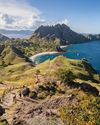
SULAWESI SENSATIONS
There are worlds within worlds and marvels untold waiting to be experienced on Indonesia's remote islands.
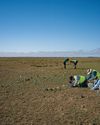
SEARCHING FOR AUSSIE DINOSAURS
Our understanding of where to find ancient life in Australia has been turned on its head by a new appreciation of the country's geology. Now the world is looking to our vast outback as the latest hotspot to locate fossils.
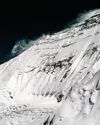
THE HARDEST NIGHT
The first Australian ascent of Mt Everest in 1984 is one of the great feats of mountaineering. Climbed by a small team semi-alpine style, with no bottled oxygen, via the Great (Norton) Couloir, it remains unrepeated 40 years later.
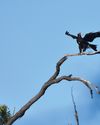
WEDGE-TAILED WONDER
The chance discovery of an eagle nest leads to an extended vigil observing normally hidden behaviours of one of nature's supreme winged marvels.
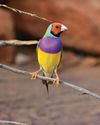
BURDENED BY BEAUTY
Northern Australia's Gouldian finch survives in huge numbers in cages around the world, but its wild population continues to struggle.
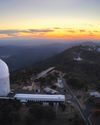
A TELESCOPE FOR A GOLDEN AGE
After a stellar 50 years as one of the country's major scientific assets, the AAT continues to play a major role in keeping Australian astronomy on the world stage.
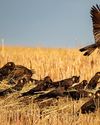
COCKY WHISPERING AT COOMALLO CREEK
This patch of remnant bush on the edge of the West Australian wheatbelt is a place loved by one of Australia's rarest bird species and the man who has studied the site for more than 50 years.

A PIONEERING PAIR
Louisa Atkinson and her mother, Charlotte, were among Australia's earliest authors, and pioneers in women's rights.
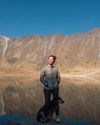
THE LONGEST WALK
Lucy Barnard is walking from Argentina to Alaska -the length of the Americas - on an extraordinary journey of endurance and adventure.
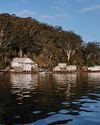
SECLUDED, BUT NOT ALONE
In an era of heightened social isolation, where many of us lead lonely lives, Dangar Island offers the chance to be part of a supportive, connected community.